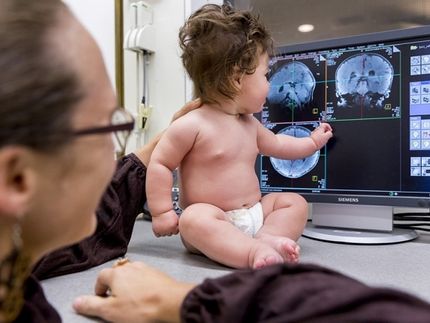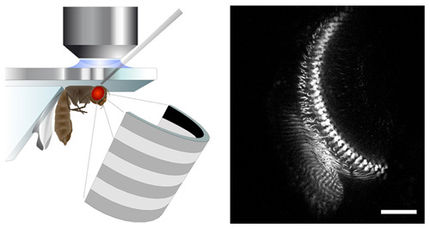Breakthrough: Scientists harness the power of electricity in the brain
Advertisement
Someday, a paralyzed patient may be able to ‘think’ a foot into flexing or a leg into moving, using technology that harnesses the power of electricity in the brain, and scientists at University of Michigan School of Kinesiology are now one big step closer.
Researchers at School and colleagues from the Swartz Center for Computational Neuroscience at the University of California San Diego have developed technology that for the first time allows doctors and scientists to noninvasively isolate and measure electrical brain activity in moving people. This technology is a key component of the kind of brain-computer interfaces that would allow a robotic exoskeleton controlled by a patient’s thoughts to move that patient’s limb, said Daniel Ferris, associate professor in the School of Kinesiology and author of a trio of papers detailing the research.
“Of course that is not going to happen soon but a step toward being able to do that is the ability to record brain waves while somebody is moving around,” said Joe Gwin, first author on the papers and a graduate research fellow in the School of Kinesiology and the Department of Mechanical Engineering.
Using this technology, scientists can show which parts of the brain are activated and precisely when they are activated as subjects move in a natural environment. For example, when we walk signals originate in specific parts of the brain as messages travel from the brain to the muscles. When scientists understand where in the brain impulses occur, they can use that geographic information for many different applications. Previously, scientists could only measure electrical brain activity on non-moving patients.
Ferris likens isolating this brain electrical activity to putting a microphone in the middle of a symphony to discern only certain instruments in certain areas, say the oboe in the first chair, or the violin. As in an orchestra, there are many noisemakers in the brain producing excess electrical activity, or noise. Even the electrode itself produces noise when it moves relative to its source.
Researchers identified the brain activity they wanted to measure by attaching dozens of sensors to a subject who was either walking or running on a treadmill. They then used an MRI-based model of the head to figure out where in the brain that electrical activity originated. In this way, scientists could localize the sources of the brain activity they were interested in and ignore the rest of the activity if it did not originate in the brain.
Ferris, who also has an appointment in biomedical engineering, said there are a couple reasons scientists can do this type of measuring now when it wasn’t possible even a few years ago. Colleagues at the Swartz Center for Computational Neuroscience at the University of California San Diego devised the computational tools to do the measuring noninvasively in seated individuals, and without those tools the measuring would have been impossible. The two research groups then pushed farther and tried the measuring in walking and running subjects. Also, electrodes have gotten more sensitive and have a better signal to noise ratio, he said.
The military is also interested in this type of technology, which could be used to optimize soldier performance by monitoring the brain activity of soldiers in the field to know when soldiers are performing at their peak. It could also help the military understand how information can be best presented and handled by soldiers.
In fact, any industry or organization interested in understanding how the brain and body interact could benefit from knowing how the brain functions during a given task.
“We could image the brains of patients with various different types of neurological disorders, and we could potentially target rehabilitation to subsets of patients that show similar symptoms,” Gwin said. “If we could image the brain while going through some of this rehabilitation we could design the treatments better.”






























































